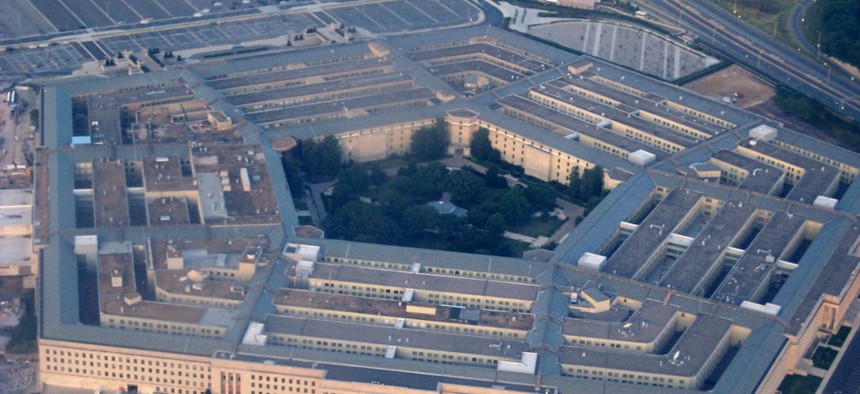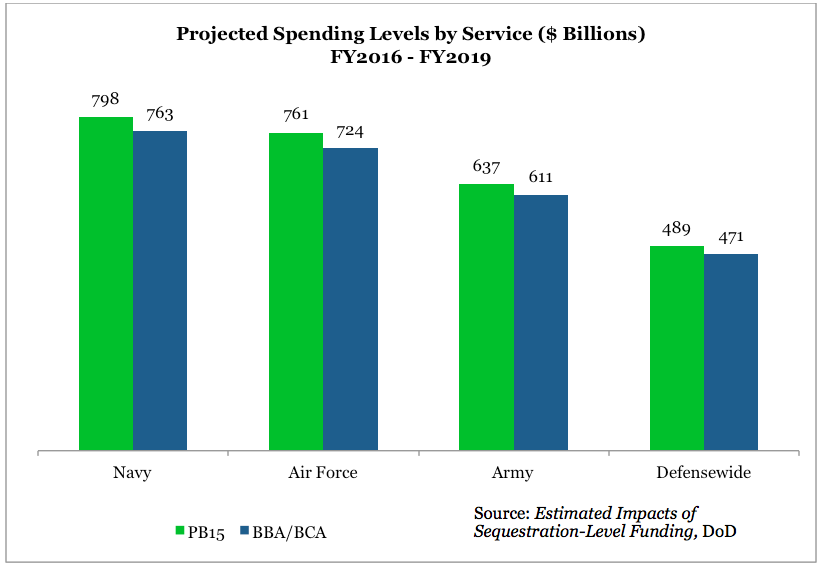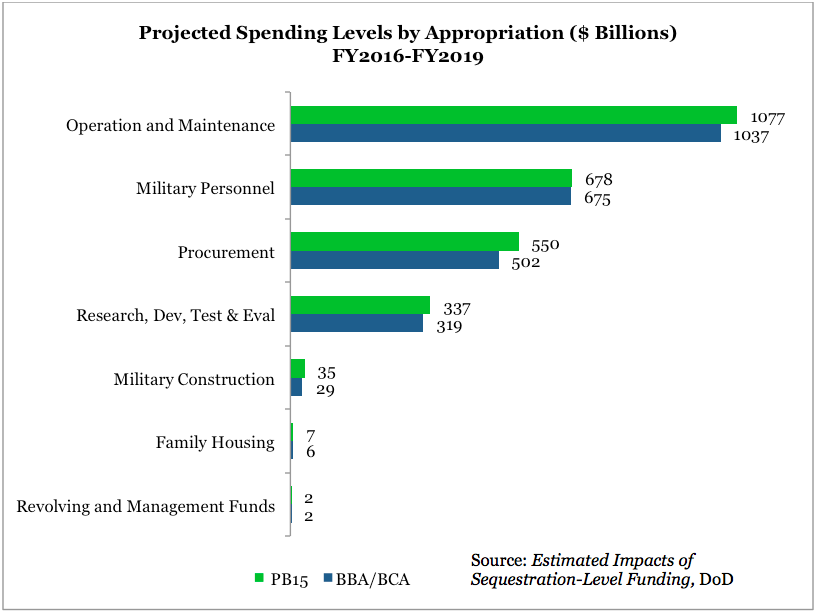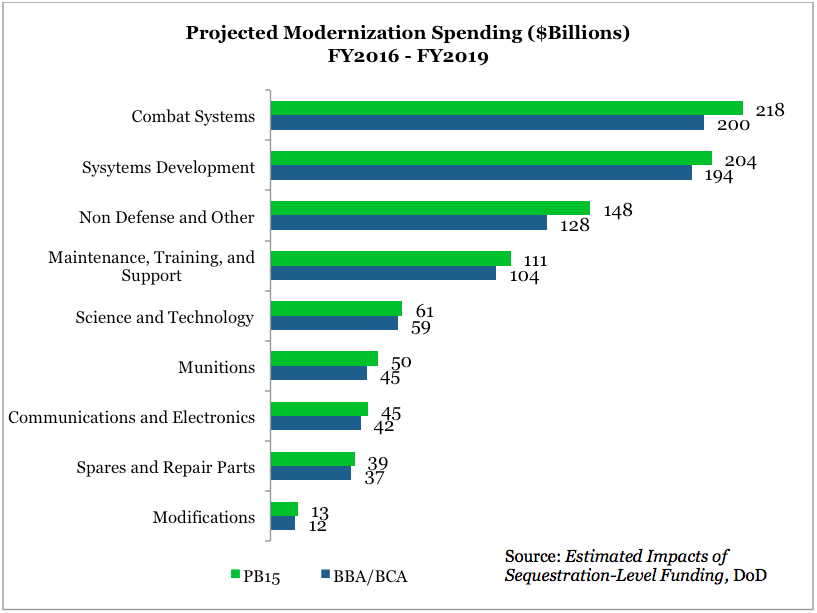
Flickr user gregwest98 (Creative Commons Licensing)
What a Return to Sequestration Means for DoD, in 3 Graphs
The Department of Defense is determined to avoid the return of sequestration-level funding, or at least to let policymakers know exactly how much it will cost U.S. national security.
The Bipartisan Budget Act of 2013 (BBA) provided temporary sequester relief to the Department of Defense, but without a long-term budget deal in place, sequestration will come roaring back in FY 2016. To make the costs of this happening explicitly clear, DoD recently released a report documenting the projected costs of sequestration-level funding over the next few years. The report compares spending levels from the President’s FY 2015 budget proposal (PB15) to sequestration spending levels as determined by the Budget Control Act of 2011 (BCA) and BBA. Overall, a return to sequestration would result in a 4.3% decrease in DoD funds ($115 billion) compared to the President’s budget proposal for FY 2016 through FY 2019. The three graphs below show the differences in the two spending levels for the service branches, appropriation categories, and modernization efforts.

The projected impact for each of the service branches and the non-service specific DoD component is roughly equivalent. Should sequestration return, each can expect a 4-5% reduction in overall funds from the President’s FY 2015 budget proposal over the FY 2016 to FY 2019 period.

Looking at the projected impact through another lens – appropriation category – reveals the varying effect of sequestration on major spending areas. The projected decrease in funds allocated for military personnel costs would be negligible (-0.4%), but the impact for procurement (-8.8%) and military construction (-16.4%) would be anything but. The largest appropriation category – operations and maintenance – would suffer a 3.7% reduction in spending.

A return to sequestration would have a particularly significant effect on modernization efforts. Modernization spending would suffer a 7.5% spending reduction ($66 billion), compared to 4.3% for the entire DoD budget. This impact, however, varies across modernization efforts. Notably, modernization of non-defense and other programs (e.g., administrative processes, intelligence programs, etc) would experience a 13.5% decrease in spending from the President’s budget over the FY 2016 to FY 2019 period, while funds to modernize science and technology programs would be less affected (-2.8%). Modernizing combat systems, DoD’s most expensive modernization effort, faces an 8.2% reduction in funds.
The high-level data on display confirms DoD’s core sequestration narrative, that sequestration-level spending will not keep it from achieving its primary mission, but it will limit investments in and preparation for U.S. national security in the 21st century.
This post is written by Government Business Council; it is not written by and does not necessarily reflect the views of Government Executive Media Group's editorial staff. For more information, see our advertising guidelines.